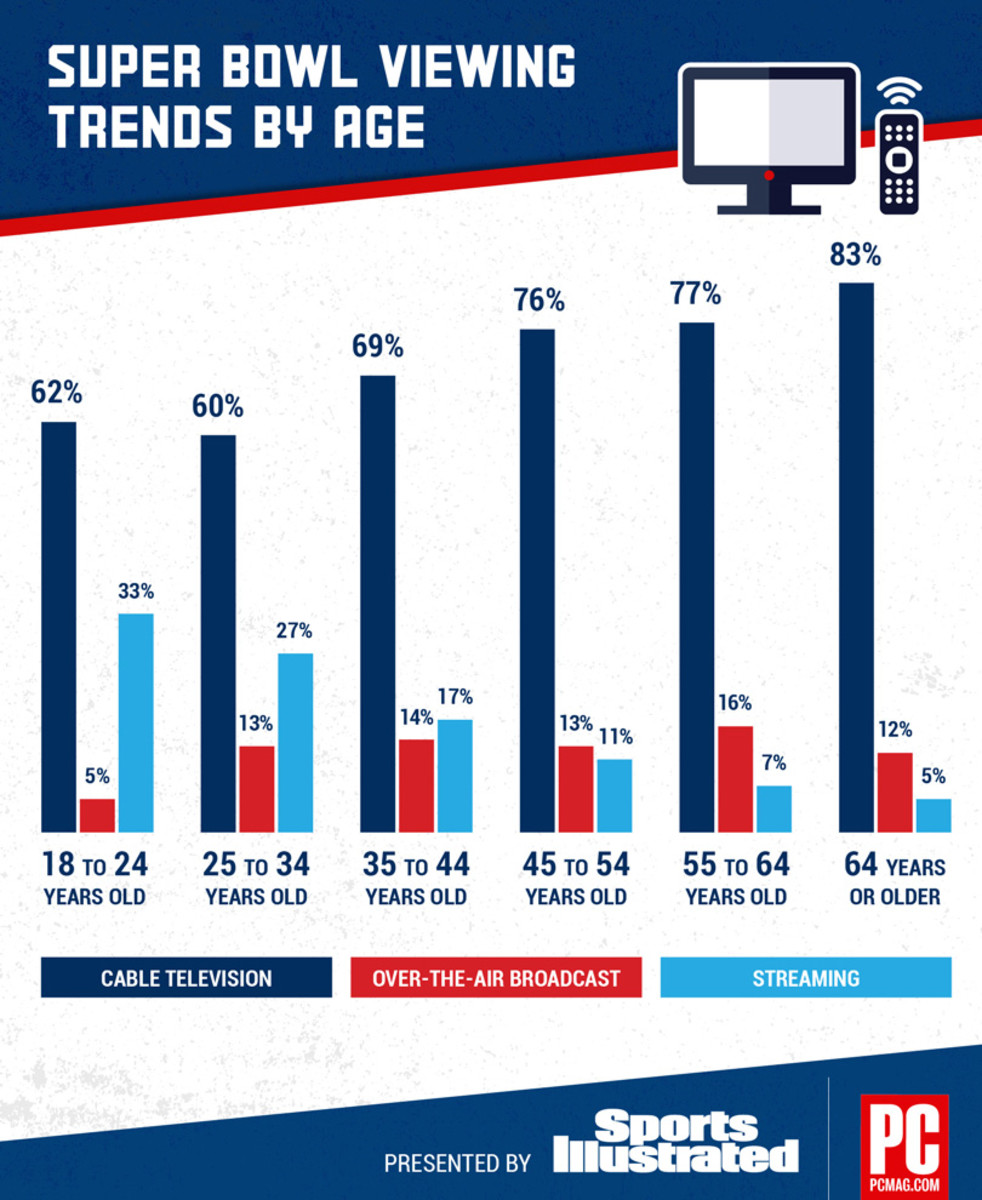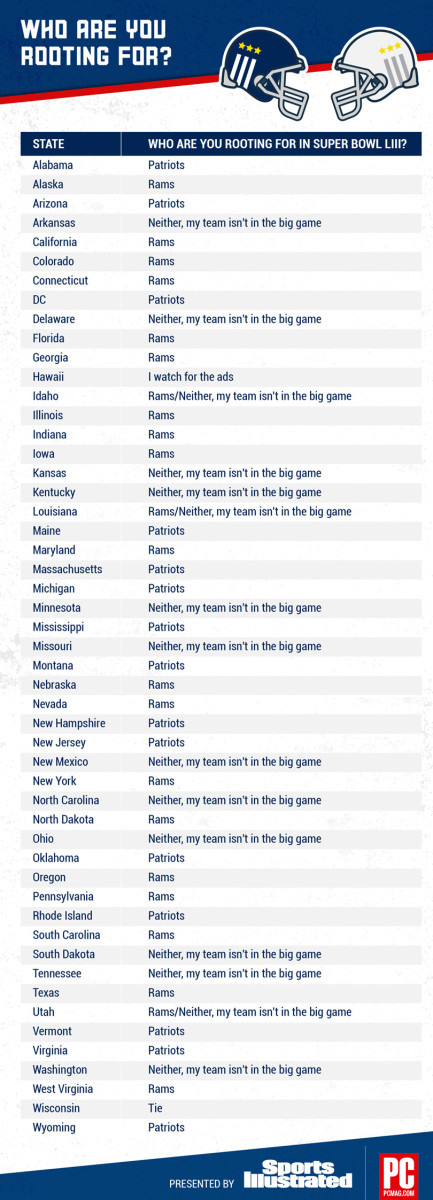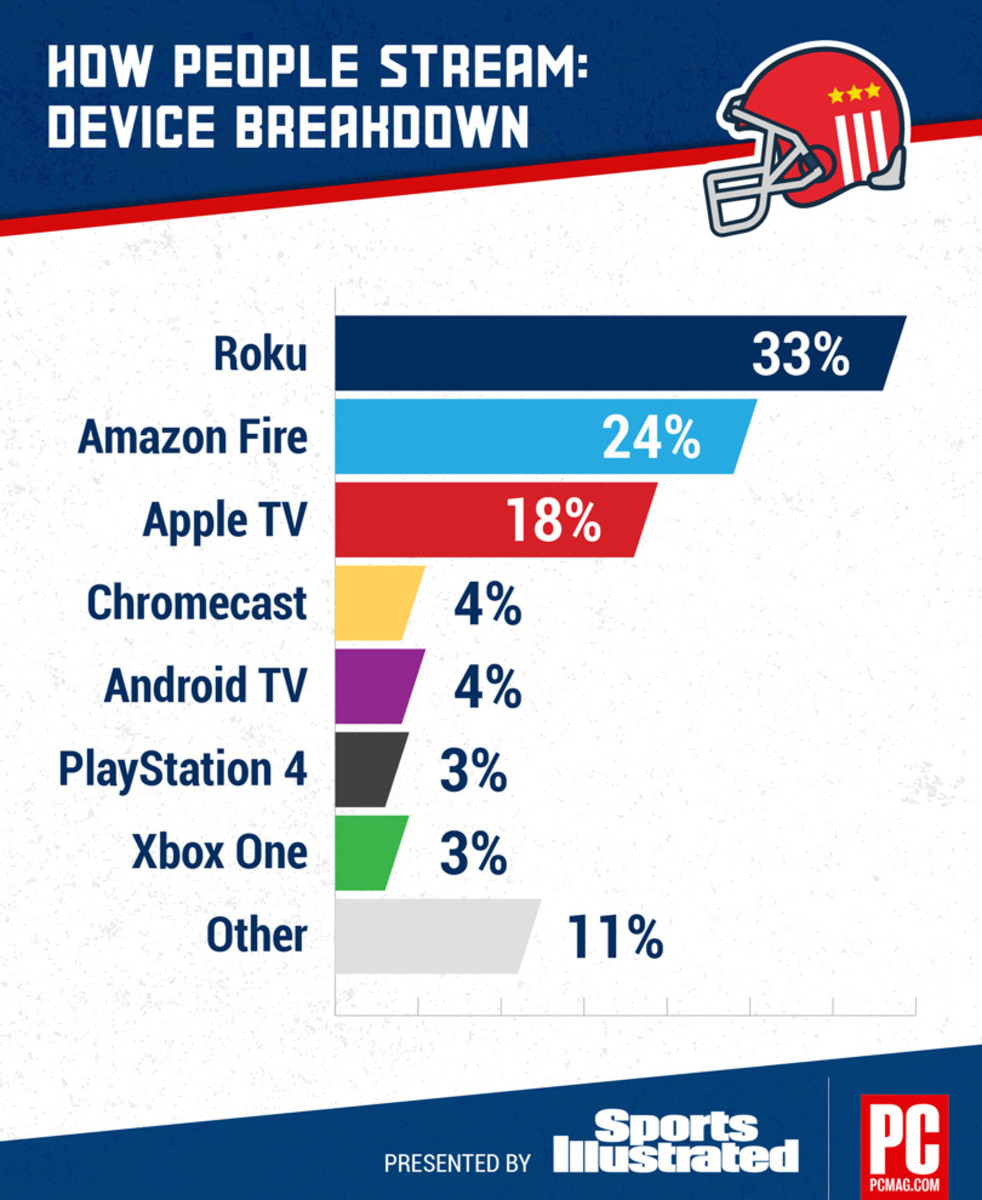How Will Most People Watch the Super Bowl? Here Are the Technology Trends for 2019

The big game warrants a big screen. While digital services have changed the way we watch television—including sports—95% of respondents to a PCMag and Sports Illustrated survey said they’d be gathering around a TV screen on Sunday, Feb. 3.
To discover how football fans across America will watch the Super Bowl this year, we surveyed more than 2,800 respondents between Jan. 22 and Jan. 25, 2019. While the results show that most people will watch the game on a TV, 15% of will-be viewers will pull the signal from an online stream. That number jumps to 33% when it comes to 18-to-24 year olds. A third of streamers will use a Roku to do so, the most popular platform in the poll.

Our results showed that most viewers will support the Rams over the Patriots in Super Bowl LIII. The split was even more exaggerated among younger fans: twice as many 18-to-34 year-olds will be pulling for L.A. compared to New England.

Regardless of team affinity, fans are looking forward to hearing Tony Romo’s debut in the booth. Fewer than 10% said they would forgo listening to the CBS broadcast as the game plays out. Here a few more takeaways from the survey:
• There’s been plenty of talk about CBS’ decision not to discuss gambling during the broadcast. A majority of fans might be just fine with that; over 75% of poll-takers said they won’t be wagering, with 25-to-44 year olds being most likely. Of those who are betting, a majority plan to do so under-the-table.

• Whether it’s to re-watch a play, catch a commercial a second time or—maybe—relive Maroon 5’s halftime show, 36% of respondents plan to pause, rewind, and/or fast forward during the game. That functionality can be limited on emerging services. That partly explains why cable viewers appear 3x as likely to use DVR functionality on Super Bowl Sunday.
• Overall, about ¾ of fans found it easy to access the NFL games they wanted to watch this season. However, 17% (including 27% of streamers) said that the delay between digital streams and broadcast television—often a 10 to 30-second gap referred to as “latency”—negatively impacted their viewing experience this year. As for access, a third of Super Bowl streamers said they did not find it easy to watch the NFL games they hoped to.
